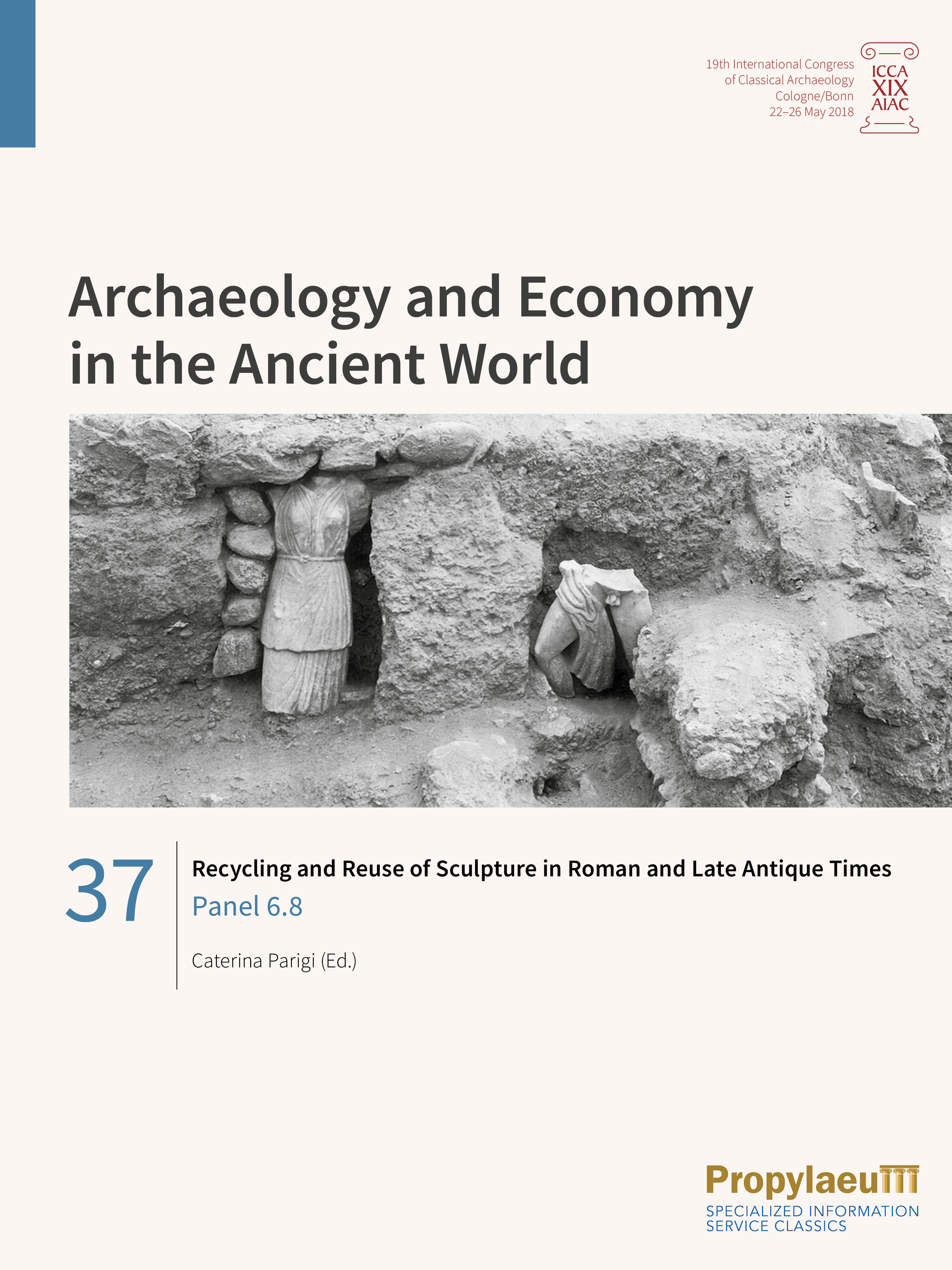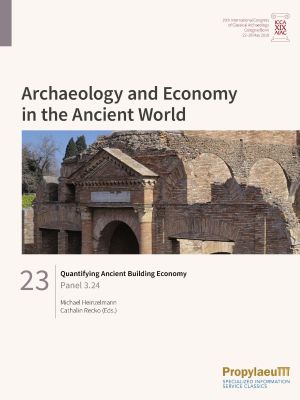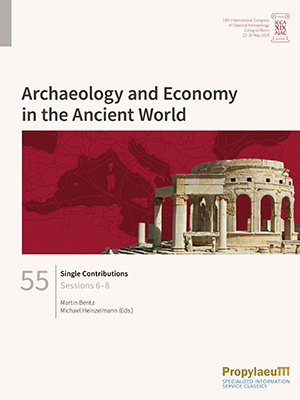Barker, Simon
Recycling and Reuse of Sculpture in Roman and Late Antique Times: Panel 6.8
Recycling and reuse of sculpture was a common practice in the ancient world, which took a variety of forms in different periods and places.
The volume stresses two main aspects in relationship to this practice, namely the reuse of sculptures and their parts as building material on the one hand and in their original function or as works of art on the other hand.
The reuse of sculpture has a number of socio-economical aspects. As the economic factor always plays an important role in recycling, it must always be taken into account. It is also important to remember the difficulty to purchase new sculptures in Late Antiquity. However, reuse and recycling are complex processes, which do not have a single cause and not only occur in Late Antiquity. The reuse of statues may also have had an aesthetic value and been seen as a reminder of former times of glory.
This volume focuses on the Roman and Late Antique periods, aiming to show the continuity and the complexity of the phenomenon. Through the comparison of different case studies in varying contexts, the papers highlight the common features and local singularities of this practice.
Quantifying Ancient Building Economy: Panel 3.24
In recent years, the study of ancient construction has focused increasingly on putting the different aspects of the process of building into an economic framework. This entailed examining the various steps of construction and the organization of a building site in detail. It also meant that attempts were made to quantify the use of both the materials and the labour necessary for the building project, as these illustrate the scale of a building project and its impact on the overall economy.
The goal of this volume is to bring together different approaches of the study of the economy of building. With the help of methods of quantification and intensive architectural studies, the case studies of city walls, baths, temples and timber buildings in this volume not only shed light on the various constructional characteristics of these buildings, but also on a wide range of economic implications. The collection of papers ranges from Messene in the 4th century BC to Imperial Rome and are completed by practical insights from 19th century building manuals.
Sessions 6–8, Single Contributions
Economic aspects permeate all areas of public and private life in ancient societies, whether in urban development, religion, art, housing, or in death. Research on ancient economies has long played a significant role in ancient history. Increasingly in the last decades, awareness has grown in archaeology that the material culture of ancient societies offers excellent opportunities for studying the structure, performance, and dynamics of ancient economic systems and economic processes. Therefore, the main objective of this congress was to understand economy as a central element of classical societies and to analyse its interaction with ecological, political, social, religious, and cultural backgrounds. The theme of the congress was addressed to all disciplines that deal with Greco-Roman civilization and their neighbouring cultures from the Aegean Bronze Age to the end of Late Antiquity.
This collective volume contains single contributions from sessions 6, 7 and 8, which discuss questions about consumption and investment in everyday life, sanctuaries and urban contexts, as well as questions about the role of the city in the ancient economy.









